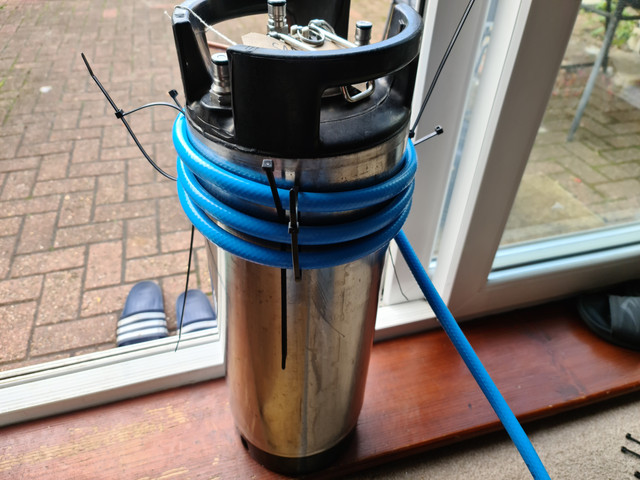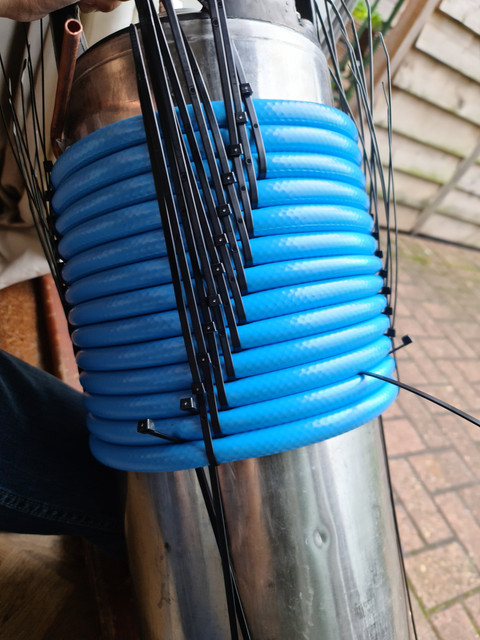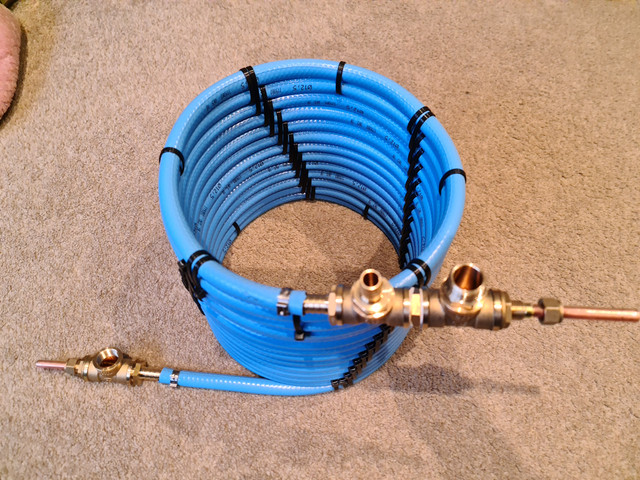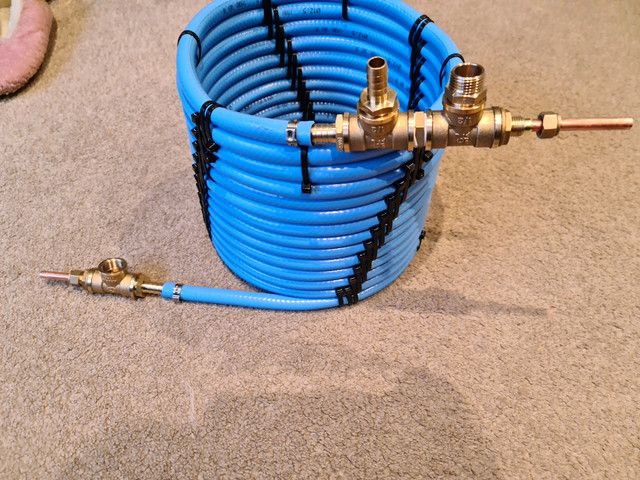Have you made it yet mate? Be interesting to see a piccy :-)
Hi,
I'm working on but it does not go as quick as I would like. Here are some pictures:
As I'm cheap, I have decided to use PVC tube for the outer sleeve . In such a case soldering was not an option so I had to use compression fittings. If you decide to use silicon tube than you may use only copper fittings.
I bought 4mm2 cross section electric conductor. After stripping the insulation the wire turn to approx. be Ø2.2mm. To ease the copper wire coiling I first coiled the wire on Ø15 copper pipe. For approx. 6m long heat exchanger I had use approx. 8,5m wire . In the end I had to trim one end.
I soldered one end of the copper wire about 120mm away from the copper pipe. Afterwards, I filed the "whisker" in preparation for the insertion in the PVC sleeve.
As soon the solder was cool enough I pulled the copper wire along the copper pipe. It turned out that it was much easy than manually coiling the wire on the pipe. More than tis, the result looks even and nice. If one would try my method, one should take care not to allow the copper wire uncoiling.
As I have no pictures detailing some steps, I try to explain: after "pulling" the wire coil along the pipe, I had secure the "free" end with some electric tape and 2 zip-ties. I had pour a decent quantity of liquid dishwashing detergent in the PVC sleeve and I pulled the sleeve along the copper wire starting the "soldered end". It went much easier than I expected !
Than, the PITA! Coiling the heat exchanger. A third hand would help but the fourth one would be better. As I had to manage the situation with only two hands, I spent 1 hours on my knees on the floor tiles whispering "incantations" to all the gods I know and the ones I will discover starting now...
As the works go on, I'll come back. By the time, if you want me to detail some issues, please, shoot.
Wow!!! This is my longest post and I'm no longer a teenager. You could imagine English is not my mother's tongue so if my formulation is unclear, please, let me know.























